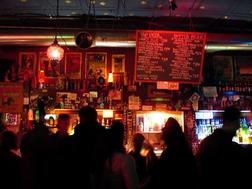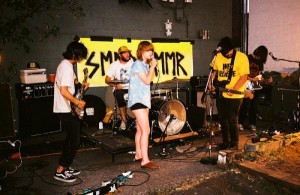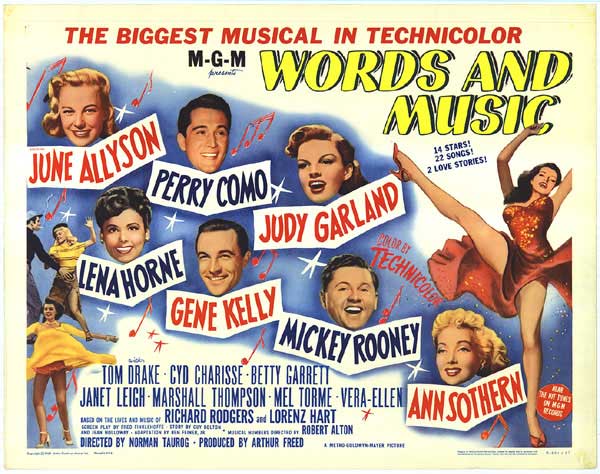The Twilight Sad @ the Empty Bottle, Chicago
March 2, 2012

If I hadn’t been riding in a cab to the show I would have had to double check my directions. After arriving at the Empty Bottle in Chicago’s Ukrainian Village I couldn’t believe that a band like The Twilight Sad would venture from Kilsyth to Chicago to play in a corner dive bar. If I hadn’t seen the band’s bassist lingering around the swag table (which flanked a Ms. Pacman cabinet) I’d have called the whole operation into question. No punches pulled, the place is a dive, though a dive in the best possible sense – a local joint where you’d go to see your cousin’s band play a set of Ramones’ covers but only because of the $3 Shiner Bocks. The walls held together by thousands of staples, the wallpaper comprised of the impressive shards of posters documenting past acts. Tattoo-sleeves on the bartender. Multi-colored Christmas bulbs dangled above the stage. Chiaroscuro spots at the side of the stage, that would in due time, obscure all of my attempts at in-concert photography.
Micah P. Hinson warmed up the early crowd with some standard-fare singer-songwriter angst, albeit wearing white Buddy Holly specs which at least provided a topic of conversation while my party warmed up the back end of the bar.

The penultimate band, a Bay Area export by the name of Young Prisms, provided a pleasant smattering of Jesus and Mary Chain covers, which actually turned out to be their original material. The perfect opening act – familiar and unmemorable but with some potential to become an “I-saw-them-way-back-when” band. The curious footnote about the Young Prisms’ set, which proved to be a harbinger of things to come: we couldn’t tell if the supposed lead singer was actually singing. I changed my viewing angle of the stage so that the microphone wasn’t blocking the lead singer’s mouth. Yes, indeed, she’d been singing. News to us.
More about the venue. Imagine an L. Place the bar along the long upright and a two-tiered riser for concerts in the short end. The stage at the crux and a brick column flanked by doorways directly in front with room for about two dozen spectators between the stage and the column in a crowded mass. With Stella in hand I pushed near the front end of the bar in anticipation of the Twilight Sad. Though it wasn’t really anticipation per se since they were already on stage testing and honing levels without much fanfare. And then they paused. James Graham huddled over the microphone, wilting inside himself. A pause before synth and haunting distorted bass reverb commandeered the Empty Bottle. Graham’s body seethed with intensity as he brooded the opening of “Kill It in the Morning,” the concluding track on their latest No One Can Ever Know. No translation necessary. Not that deciphering his thick Scottish accent proves necessary to getting lost in the music or understanding Graham’s cryptic lyrics – but because it was almost like he wasn’t singing at all, despite the clear intent and focus on consuming the microphone. The swell of synth and percussion near the end of the song resonated with the largely idle crowd, causing the first head widespread lost-in-the-music head nods and air drumming. With the vocals drowned out by a wall of reverb, I relocated to the two-tier risers, figuring on improved sonic fidelity.

“Don’t Move” followed but instead of reverb distorting their sound, percussion overshadowed the mix. Only when drummer Mark Devine launched the recognizable opening drum cadence for “That Summer, at Home I Became the Invisible Boy” did a song resemble an album recording. Graham belted the repeated chorus “Kids are on fire in the bedroom” clearly and intentionally, the minimal reverb finally allowing an aural connection to the singer but these connections seemed localized to songs from their prior albums. Fan favorite “Cold Days from the Birdhouse” and “Reflection on the Television” succeeded due to a more minimal, precise mix of vocals, drums and guitar. “Cold Days” in particular offered Graham’s voice a chance to come into focus. He lingered on particular passages, slowed the tempo, played with our expectations and highlighted a sadness in the song’s chorus that isn’t wholly apparent on the album version.
But this highlight came too late in the show, perhaps, to hook anyone unfamiliar with the bands catalog. Those already familiar with The Twilight Sad and their music would have reveled in the chance to witness Graham, in the way the prior music generation witnessed Ian Curtis’ localized intensity, his ability to command a two foot space on a stage and thereby an entire room. The orchestration sustaining his performance on stage, eyes closed, lost in the synth and reverb. Songs from the “No One Can Ever Know” album, as great as they are on the album, amplified too large for the space and drowned even Graham’s confident vocals. Poor Stephanie Hodapp of the Young Prisms’ never stood a chance.
Still trying to find that sweet spot, that spot that allowed each component of music to flourish, I nestled into the small crux of the “L” next to the brick column directly in front of the stage and located a semblance of fidelity just as “And She Would Darken the Memory,” a favorite track from Fourteen Autumns and Fifteen Winters, concluded. Even the accent-clouded lyrics of the chorus “And their friendly faces with put on smiles” emerged through the din with a measure of intelligibility. Sigh. Once the Twilight Sad left the stage after their curious closer, “At the Burnside” – a song noted for its notorious “wall of sound” comprised of wailing guitar, piano and percussion – I reported my finding to my party, now nursing their final drinks at the rear of the bar. They shrugged and we wandered out into the snowy Chicago evening. We caught a cab and I spent the entire time questioning what went wrong, my voice too loud for the silent cab. I began the process of turning down the volume on the synth and reverb still echoing in my head. I questioned the choice of venue and the sound engineers but never the band. Not even once. The performance was there and showcased brilliantly in fits and spurts. But in the end, I decided that maybe this venue, this corner dive, was precisely the place that the Twilight Sad could be precisely themselves, baring their damaged souls but still hiding among the reverb and causing everyone else to question, exactly, what it all means.

